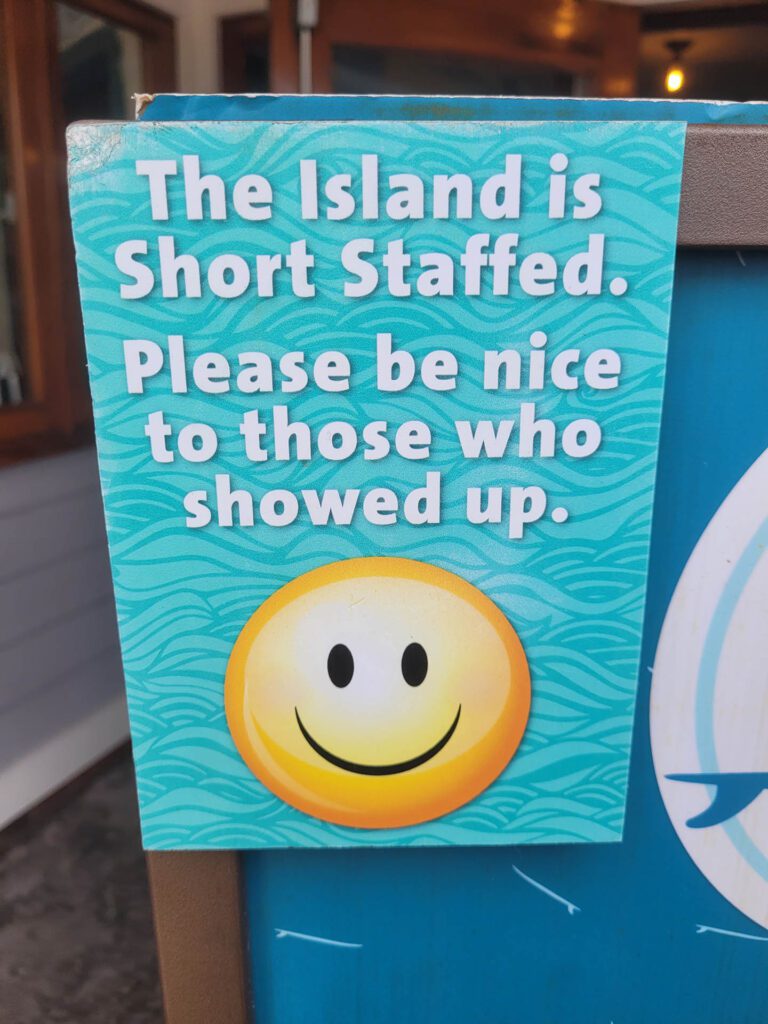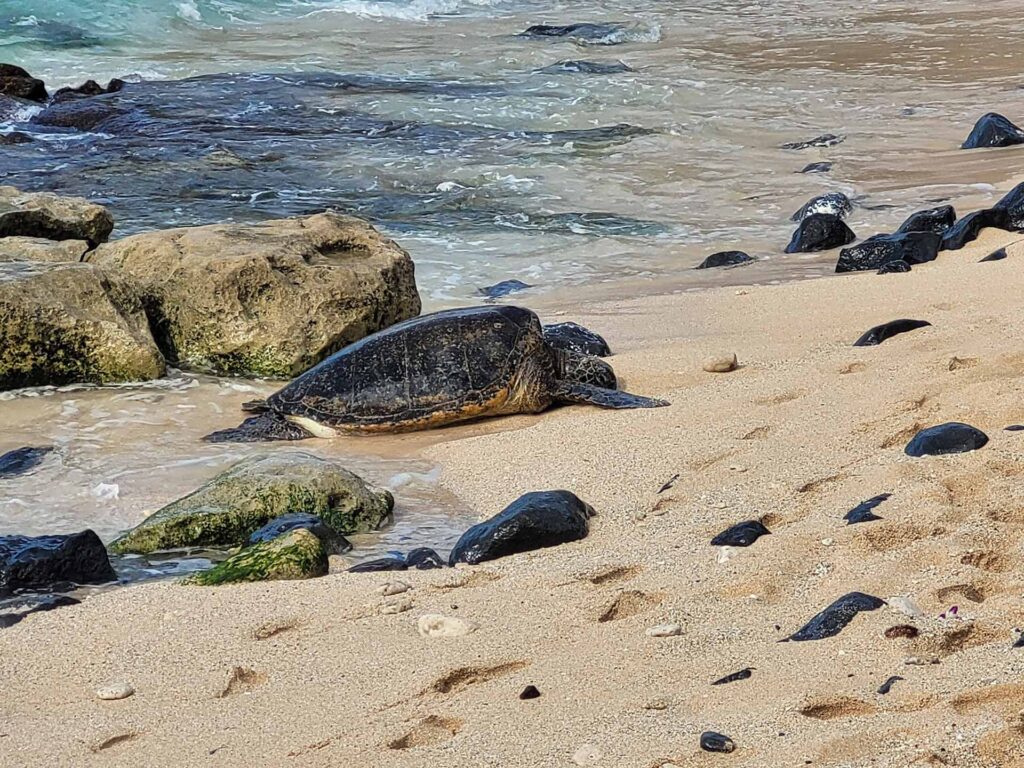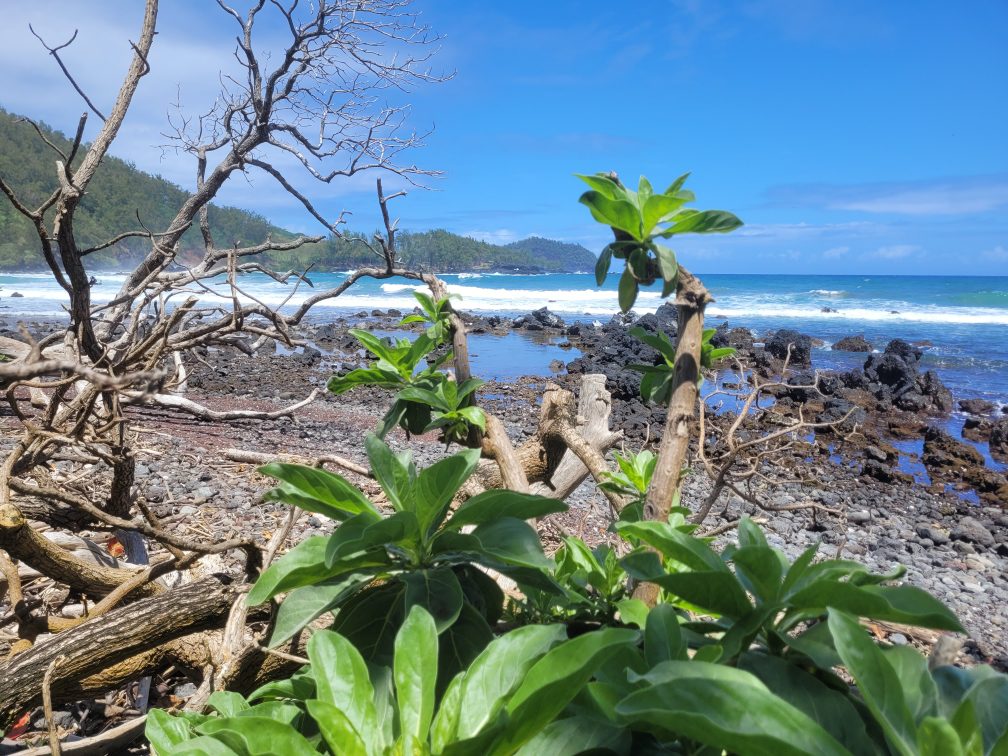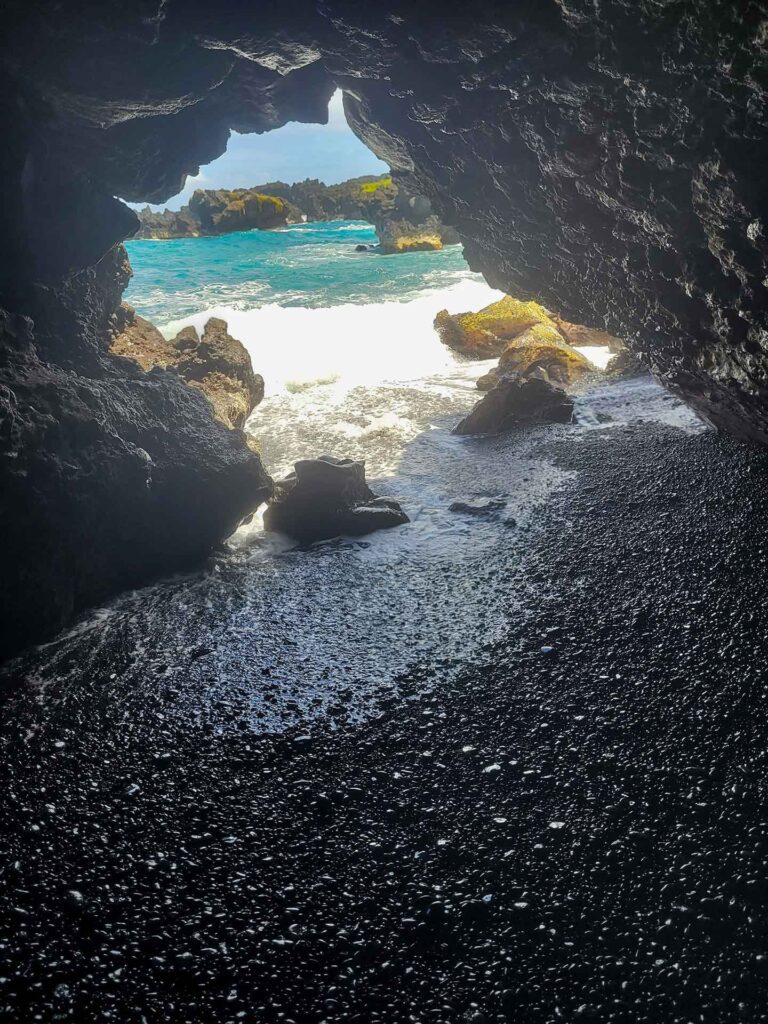Good day,
I recently returned from 12 days in Hawaii. One of the things my dad has been missing since my mom passed away is traveling. Last year, I brought him to England for a week on one of my visits to see Trish just to get his feet wet again and we had a great time. Shortly after we got back, my sister and I were visiting and talking about places that my mom (and us) always wanted to see. Hawaii was high on that list. On my sister’s bucket list was taking the one-week cruise that visited all of the Hawaiian Islands. Ever since Tom Selleck looked directly into the camera and raised his eyebrow on the very first episode of Magnum P.I., I too have wanted to see the state for myself. During our conversation that day, I pointed out that my sister was turning 50 in March of 2023.
I am certainly not going to admit to being a manipulative so-and-so, however it seemed that I had effectively planted the seed because two weeks later I got an email saying that he had booked a Hawaiian cruise vacation for him, my sister, Trish and myself. So, that is how we ended up on our plane on March 22nd.
Two days prior was our annual tourism symposium. On the eve of the symposium, we were having dinner with our keynote speakers and I was talking about the impending trip to Hawaii. I was talking about being excited to visit the Polynesian Cultural Centre because I thought it was great that they were using tourism dollars to support the community. Dakota Brant, one of our keynote speakers, said that was great, IF, the cultural centre was owned by the Polynesian community. While we continued to chat, Tom looked up the ownership of the Polynesian Cultural Centre and, as it turns out, it is owned by the Church of Jesus Christ of Latter-Day Saints. My heart sank and I was instantly concerned that, coupled with what I had been reading about resident sentiment and an exodus of people because of high costs, the trip was somehow going to be tainted.
I don’t know about you, but to me, one of the disadvantages of being intricately linked to this industry is that it is difficult to just go somewhere and be a tourist. Everywhere I went, I was looking at things through an operational lens and couldn’t help but ask industry questions to our guides, attractions operators and servers. What I love about our industry, is that there is no shortage of “chatters” who loved to talk about their home and its relationship with tourism openly and honestly. As it turns out, there are a lot of similarities between our region and Hawaii – at least in terms of issues being faced by the tourism industry.
The entire population of the state of Hawaii has roughly 400,000 less residents than Central Counties’ geographic boundaries of York, Durham and the Headwaters Tourism Region. Their population is spread across several gorgeous islands, while Central Counties would easily fit into just the big island of Hawaii. Tourism is their number one industry. Over the years, their main agriculture crops (sugarcane and pineapples) have moved productions to countries where labour and processing are cheaper. We learned this on our visit to the Dole Plantation, which is now mostly just for tourists, although Dole is still producing enough pineapples to feed the islands – thanks in part to the funds coming in through tourism. The bad part about eating a perfectly ripened pineapple at its source is that I am never, ever going to be able to enjoy a pineapple here at home the same way. And don’t even get me started about Dolewhip soft serve ice cream…
Being so reliant on tourists, the pandemic took a hefty toll on industry staff. Many, like here at home, had to find other work to make ends meet. The difference in Hawaii is that this meant leaving the islands for the mainland. Many have not returned. Signs like this were present on every island we visited and were a gentle reminder that we were on vacation, so relax and enjoy the view if your food was taking a bit longer than expected.

According to several people I spoke with, another issue is rising housing costs which makes it very difficult for industry staff to be able to afford to live. Sound familiar? The state is absolutely gorgeous and more and more people from the mainland are purchasing land, building home and buying condos/timeshares. This is happening on all of the islands and is driving up land and housing prices everywhere. It reminded me about what has been happening in cottage country for years, which has led to staffing shortages and a housing crisis in our near North. I got the feeling that it has been a slower progression in Hawaii but I attribute that to population proximity. Cottage country is a two-hour drive away for almost 10 million people, whereas Hawaii is a five-hour flight from its closest neighbour. Regardless, the inflated housing prices and rental rates are forcing more and more hospitality staff to move further away, increasing commute times on already long shifts.
However, regardless of commute times, housing and living prices and long work days, everyone who interacted with us said they absolutely loved where they lived. From our server from the mid-West who had been “on island” for six months, to Lehua, our coach driver and tour guide who was born and raised in Oahu, they spoke of their island and its people with pride. We spent three days touring Oahu with Lehua, who spoke quite candidly about the culture of the locals and the impact that tourism has had over the years. We learned all sorts of words which truly seem to be part of the common dialect on the island, and not just something used to amuse us “haole’s”, which as it turns out means foreigner and is misspelled by most haole’s as howlie or howly. She also told of the story of how their famous shaka or “hang loose” sign came to be. A long time ago, a worker at one of the plantations accidentally had his three middle fingers cut off in some machinery. After he healed, he wasn’t able to do the job he had been, but was still a valuable member of the staff. One of the jobs he was assigned to do was flag down the trains when loads were ready to go to the docks. He would do so with his injured hand and the conductors would return the gesture as an acknowledgement. It spread from there.
One night we were eating dinner with a father and son from Maui. The son was born on the island and the dad had been in Hawaii for over 30 years. I asked him how long one needs to live on the islands before they are considered locals. He said he felt at home as soon as he moved and that there really wasn’t a locals versus imports vibe on the islands. Hawaii, like Ontario, almost tripled in population between 1950 and today. You can’t get that growth without new residents moving from other places. Lehua, who’s cultural background includes a mix of first people’s (Polynesian and Samoan) and Western Europe (French and Irish) did spend some time talking about the living culture of the indigenous populations. She was saying that because westerners have been visiting the islands from all the way back to Captain Cooks time, there were actually less than 5,000 pure-blood indigenous people on the islands. And she was quick to point out that even these people were a mix of several cultures that first inhabited the islands from neighbouring islands to the east. And, while Hawaiian history and culture was a predominant topic of discussion on all of our tours, Lehua didn’t sugar-coat that more needed to be done to both protect the history and its indigenous people’s who, like in so many other areas, are often living at or below a “living wage” income. She says it is slowly getting better and that is thanks in part to today’s tourist, who is more likely to want to experience authenticity compared to when her boyfriend, Elvis Presley, was making movies on the islands in the 50s and 60s.
And this brings us to the Polynesian Cultural Centre. It was our last stop on our first full-day in Hawaii and, after what I had just learned a few days before, I really wasn’t looking forward to supporting the Church under the guise of non-Christian cultural authenticity. My first surprise was when Lehua told the whole bus that the Polynesian Cultural Centre was owned by the Church of Jesus Christ of Latter-Day Saints. I thought for sure that would have been a big secret. But she told us that the money made at the cultural centre was used to provide scholarships to international students from the islands of the first nations people of Hawaii so they could attend the Church’s Brigham Young University. The cultural centre was broken into “villages” of the first peoples to inhabit Hawaii (Samoa, Tonga, Tahiti, Fiji) and, as it turned out, were staffed by students from those countries. Each village was constructed to represent a typical early settlement on the islands by the first peoples from each country. They were open about their beliefs, their gods and how both shaped their cultures. At no point during our visit was there any sign or mention of western influence, which was a pleasant surprise.
Being ever curious, I spoke with several of the staff about their experience and what their plans were for the future. Their studies ranged from medicine to business, accounting to political science and every single person I spoke with talked about being able to go back home after university and putting their degrees to good use. Two students actually said that they would have never had the opportunity if it wasn’t for the Polynesian Culture Centre. We had purchased additional tickets for the luau and show that evening which also included a guided tour of the cultural centre. Our guide was from Fiji and had graduated in the fall with a degree in Business Management. She was still in Hawaii waiting for her husband to graduate this upcoming fall with a degree in social work. Both plan on going back to Fiji to build their lives and their communities. It was after she had been speaking about one of the gods that played a prominent role in her ancestor’s beliefs that I asked how she was able reconcile the beliefs of her culture against those of the Church, especially when the Church was profiting through expropriation of that culture.
She paused for a second and said that no one had ever asked her that before. No one may have ever asked her that, but she had definitely thought about it because her answer was succinct. I can’t put quotes around it because I don’t remember what she said word-for-word, but in a nutshell her response was this: We live in a modern world where anyone can “be” anywhere through technology. Regardless of exposure to any other people’s from around the world, modern Fiji wouldn’t look like it did during the time period depicted at the Polynesian Cultural Centre. What it may have looked like, no one knows, because we can’t go back and isolate its people from outside influence. Being able to show and teach non-Fijians about the roots of the culture connects people both to Fiji’s history and its current residents. She was thankful of the University’s connection to the Polynesian Cultural Centre because the Centre’s profits provided her and her husband scholarships that will make it so they can make a difference back home. The fact that it is owned by a Christian church, didn’t diminish the authenticity of the cultures they are celebrating at the centre.
Our visit to the Polynesian Cultural Centre was much better than I had expected – even if I never knew who owned it. The staff, food, and incredible evening theatrical performance was one of the highlights of the trip. The other thing I took away from the trip was the resident’s pride of place. Lehua spoke of efforts to keep all beaches public with access – even in the ritzy areas. We watched locals stringing off sections of beach to keep tourists away from the sea turtles (and in some cases, telling people to smarten up). The tour companies kept to set routes and areas that were tourism-ready so that less of us were hindering locals from their enjoyment.

For a state that has more than six times as many tourist visits per year than there are residents, they do a great job of recognizing us as an economic driver at best and a “necessary evil” at worst. I learned a ton and will never forget the beauty of those islands, the picture of which does not come close to doing it justice. The best part is my dad had an incredible time and we got to raise a glass to my mom. We had so much fun, I have already planted the seed regarding the next place he wants to take us. It may take a couple of years of picking at it, but with a little luck, it will happen.


Have a great day!
Chuck



